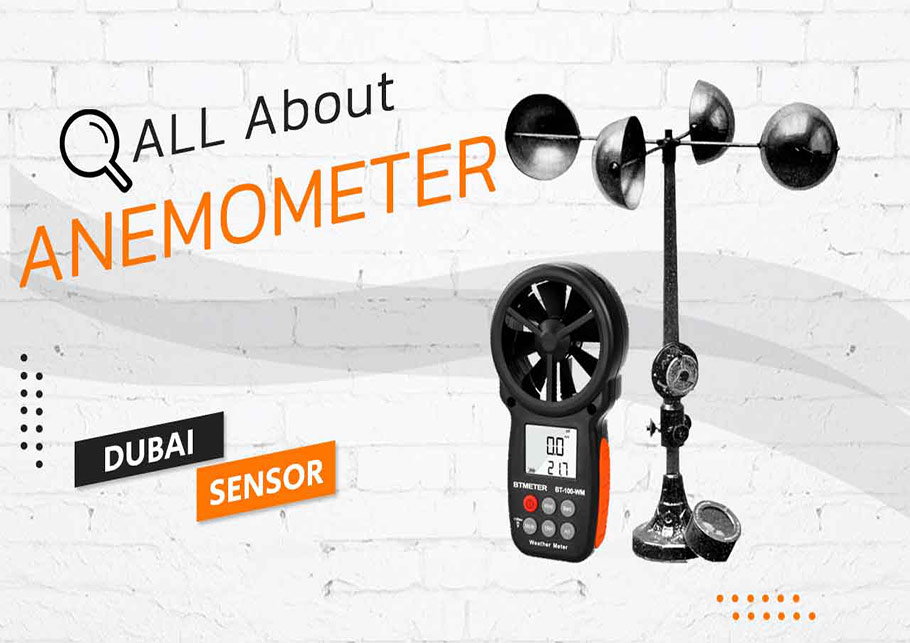How an Anemometer Can Enhance Your Weather Surveillance System
Wiki Article
All You Required to Understand About Anemometers: Exactly How They Work, Why They Matter, and Where to Make use of Them
Anemometers, however commonly ignored in the realm of scientific tools, play an essential function in different areas, providing beneficial insights into wind rate and airflow patterns. Recognizing the technicians behind these devices is essential for any individual seeking to harness the power of this information. From meteorologists tracking weather patterns to engineers making frameworks with wind loads in mind, the applications of anemometers are far-reaching and diverse. As we dig right into the intricacies of anemometer modern technology, we will certainly uncover the internal operations of these gadgets, their relevance, and the key considerations when choosing the appropriate anemometer for specific applications.
Anemometer Essentials
An essential tool made use of to determine wind speed and direction, the anemometer plays an important function in meteorology and various sectors. An anemometer normally includes three or 4 mugs that rotate in the wind, a vane that aims right into the wind, and sensors to track the movements or turnings. By determining the rotations or activities over a particular period, the anemometer can establish wind rate. The vane helps establish wind direction by aiming right into the wind, providing beneficial data for climate forecasting, aviation, maritime procedures, environmental surveillance, and wind energy applications.
There are numerous types of anemometers offered, including mug anemometers, vane anemometers, hot-wire anemometers, and sonic anemometers, each with its distinct attributes and applications. Cup anemometers are frequently used for fundamental wind rate dimensions, while vane anemometers are chosen for directional dimensions. Hot-wire anemometers are suitable for low airspeeds, and sonic anemometers are suitable for high-precision measurements in research study and commercial settings. Comprehending the fundamentals of anemometers is necessary for exact wind data collection and analysis across various fields.
Principles of Anemometer Operation
Building on the foundational understanding of anemometer fundamentals, the principles of anemometer operation illuminate the auto mechanics behind wind speed and direction measurements. Anemometers operate on the principle of airflow impacting a sensor, causing it to rotate. Mug anemometers, for instance, have three or even more mugs that capture the wind, creating them to spin quicker as the wind speed boosts. The rotation speed is then converted right into a wind speed measurement. Vane anemometers, on the other hand, use a tail or a probe that aligns itself with the wind instructions, giving a dimension of wind instructions based on the orientation of the sensor. Hot-wire anemometers rely on link a heated wire that cools off as wind overlooks it, with the rate of cooling figuring out the wind speed. Ultrasonic anemometers step wind speed and instructions by assessing the moment it takes for ultrasonic signals to travel between transducers. Recognizing these concepts is important for reputable and accurate wind dimensions in different applications.Value of Anemometers
Anemometers play a critical role in measuring wind rate and instructions, giving vital data for weather forecasting, environment researches, ecological monitoring, and aviation procedures. Meteorologists count on anemometers to collect precise wind information, aiding them visit the site recognize weather patterns, anticipate tornados, and concern timely warnings to the public. Wind ranch drivers utilize anemometers to evaluate wind conditions and take full advantage of electrical power production from wind generators.Applications Throughout Various Industries
Applications of anemometers span across diverse industries, showcasing their convenience and energy past meteorology. In the renewable resource sector, anemometers play a vital function in examining wind problems for wind farm positionings, guaranteeing optimal power production. Industries like building and construction and mining use anemometers to monitor wind rates, critical for safety procedures, especially when operating at elevations or in open-pit mines where strong winds can present hazards. Anemometers are likewise indispensable in the aviation sector, assisting pilots in understanding airspeed and wind direction for secure take-offs and landings. The maritime market benefits from anemometers for ship navigation, assisting seafarers anticipate weather condition modifications and adjust courses accordingly. In agriculture, anemometers help farmers in handling crop spraying by supplying real-time information on wind speed to stay clear of drift. Furthermore, anemometers discover applications in HVAC systems to maximize more info here airflow and improve energy performance in buildings. The diverse use instances of anemometers emphasize their importance throughout numerous sectors, highlighting their crucial role in enhancing operational safety and efficiency (anemometer).
Picking the Right Anemometer for Your Requirements
For basic functions, a mug anemometer is suitable for measuring wind speed, while a vane anemometer provides wind instructions information. Hot-wire anemometers are suitable for reduced airspeed measurements, and ultrasonic anemometers use high precision and durability.
Verdict
In conclusion, anemometers play a vital role in gauging wind rate and instructions throughout different sectors. It is essential to think about the value of anemometers in order to make enlightened decisions when picking the most appropriate gadget for measuring wind conditions.There are different kinds of anemometers readily available, including mug anemometers, vane anemometers, hot-wire anemometers, and sonic anemometers, each with its special features and applications. Mug anemometers are frequently made use of for fundamental wind speed dimensions, while vane anemometers are chosen for directional dimensions. Hot-wire anemometers are appropriate for reduced airspeeds, and sonic anemometers are optimal for high-precision measurements in study and commercial setups.Structure on the foundational understanding of anemometer basics, the principles of anemometer operation clarify the auto mechanics behind wind speed and direction dimensions. For general purposes, a mug anemometer is ideal for determining wind rate, while a vane anemometer supplies wind direction information.
Report this wiki page